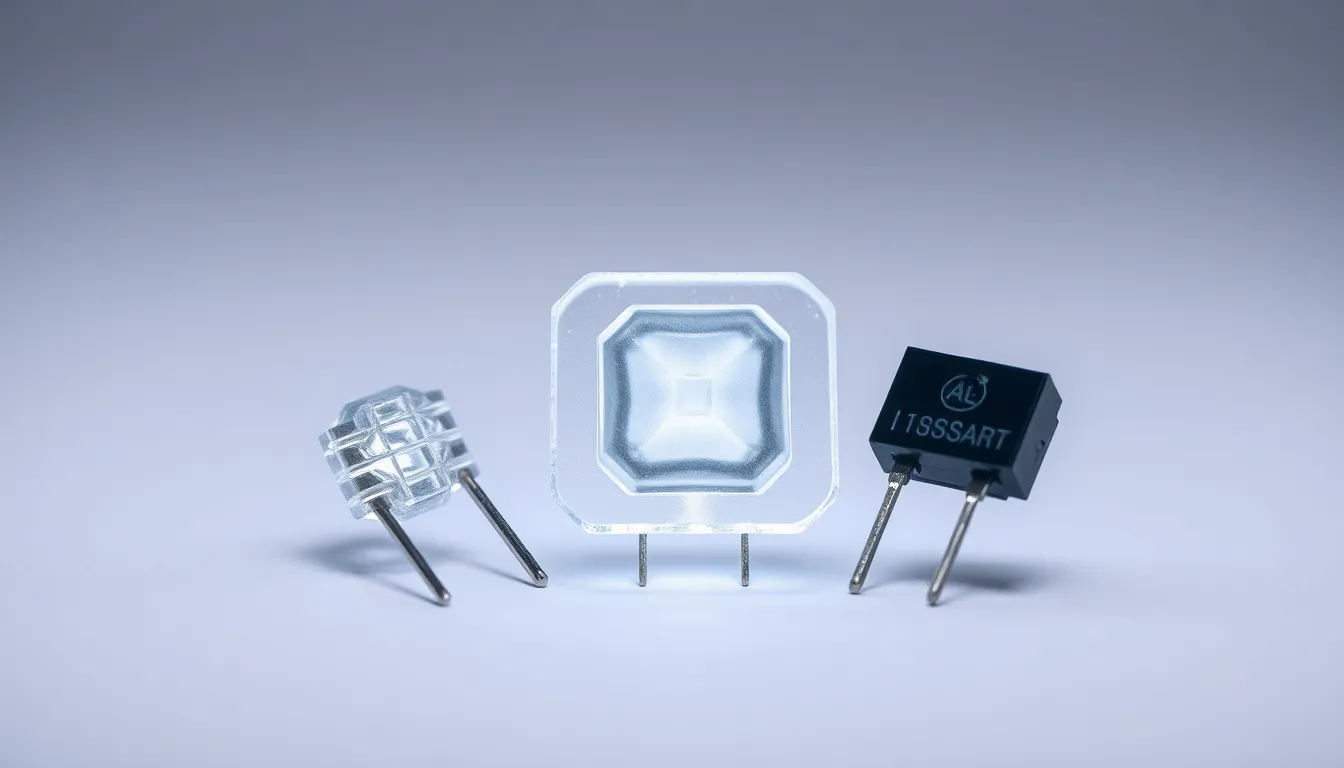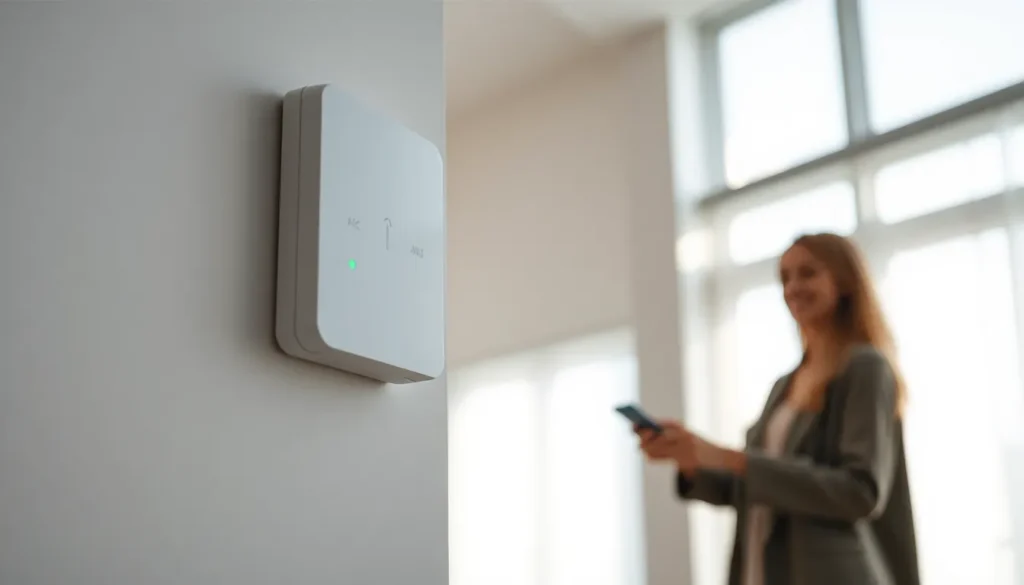In a world where lighting can make or break a mood, ambient light sensors are the unsung heroes of modern technology. These nifty little gadgets adjust brightness levels automatically, ensuring you never have to squint at your screen or fumble for a light switch again. Imagine walking into a room and letting the sensor do all the work—it’s like having your own personal lighting assistant, minus the coffee runs.
But these sensors don’t just save you from eye strain; they also help save energy and reduce electricity bills. Who doesn’t want to feel like a superhero while saving the planet? With the rise of smart homes, understanding ambient light sensors is more important than ever. Get ready to dive into the fascinating world of these clever devices and discover how they can transform everyday living into a brighter, more efficient experience.
Table of Contents
ToggleOverview of Ambient Light Sensors
Ambient light sensors play a crucial role in automating and optimizing lighting conditions. These sensors ensure that devices adjust brightness levels based on the surrounding light, enhancing user comfort and energy efficiency.
What Are Ambient Light Sensors?
Ambient light sensors are devices designed to detect the intensity of light in an environment. Equipped with photodetectors, they measure the amount of natural or artificial light present. Commonly found in smartphones, tablets, and smart home systems, these sensors allow devices to react to changing light conditions automatically. Their primary function focuses on improving the user experience, providing adequate visibility while minimizing excessive brightness.
How Do They Work?
Ambient light sensors operate using photodiodes or phototransistors to convert light into electrical signals. When light levels change, the sensor detects this variation and sends signals to control the device’s brightness. For instance, bright conditions prompt the device to lower its screen brightness while dim light triggers an increase. Algorithms process these signals, ensuring rapid and accurate adjustments. This process not only enhances user comfort but also contributes to energy conservation by reducing unnecessary power consumption.
Types of Ambient Light Sensors

Several types of ambient light sensors play crucial roles in enhancing lighting efficiency. Each type operates on unique principles, making them suitable for various applications.
Photodiodes
Photodiodes serve as light sensors that generate an electric current when exposed to light. These devices respond quickly to changes in ambient light levels, offering accurate readings. Applications include smartphones and digital cameras, where responsive light adjustment is needed. Notably, they provide reliable performance across a range of wavelengths, ensuring effective light detection.
Photoresistors
Photoresistors, also known as LDRs (light-dependent resistors), vary resistance based on light intensity. When light intensity increases, resistance decreases, allowing more current flow. This feature proves beneficial in automatic lighting systems, where they can trigger lights based on surrounding illumination levels. Typically inexpensive and easy to integrate, photoresistors remain popular in various consumer electronics.
Phototransistors
Phototransistors combine the functionality of both photodiodes and transistors. They not only detect light but also amplify electrical signals. This dual function makes them highly effective in applications like automatic light control systems and security devices. Their ability to operate at lower light levels adds to their versatility, allowing for precise illumination control even in dim environments.
Applications of Ambient Light Sensors
Ambient light sensors play a crucial role across various sectors, enhancing functionality and efficiency.
Consumer Electronics
These sensors incorporate seamlessly into smartphones and tablets, adjusting screen brightness according to ambient light. Users benefit from improved visibility and reduced eye strain during use. Digital cameras also utilize ambient light sensors for optimal exposure settings, ensuring better image quality. Many smartwatches leverage these sensors to maximize battery life while maintaining display clarity. Increased demand for user-friendly gadgets drives manufacturers to integrate ambient light sensors.
Automotive Industry
In vehicles, ambient light sensors adjust interior and exterior lighting automatically, improving driver comfort and safety. Headlights activate during low-light conditions, ensuring better visibility for drivers. Additionally, dashboard displays adapt brightness based on surrounding light, enhancing readability and minimizing distractions. Some advanced driver-assistance systems utilize these sensors to enhance sensor capabilities and assist in navigation. As the automotive industry evolves, the integration of ambient light sensors continues to gain importance.
Smart Lighting Systems
Smart lighting systems rely heavily on ambient light sensors to optimize energy use in homes and commercial spaces. These sensors detect sunlight and adjust indoor lighting accordingly, reducing electricity consumption. Users enjoy the convenience of automated lighting that responds to real-time light levels, creating a comfortable atmosphere. Some systems connect with smart home devices to enhance overall energy efficiency. Adoption of these technologies reflects a growing emphasis on sustainability and user comfort.
Benefits of Using Ambient Light Sensors
Ambient light sensors provide several advantages, primarily focusing on energy efficiency and enhancing user experience.
Energy Efficiency
Energy efficiency stands out as a major benefit of ambient light sensors. These devices automatically adjust lighting based on the surrounding light levels, which minimizes energy consumption. Users save on electricity bills when lighting reduces in brightly lit environments. For instance, a smart lighting system equipped with these sensors can lower bulb brightness when there’s ample natural light. The result manifests in extended bulb life and decreased energy costs. Research indicates that implementing ambient light sensors in homes and offices can reduce energy usage by up to 30%. Such significant savings contribute to an overall greener environment.
Enhanced User Experience
Enhanced user experience plays a vital role in the appeal of ambient light sensors. These sensors create a comfortable atmosphere by adapting display brightness and room lighting according to available light. Comfort improves when users don’t strain their eyes trying to adjust to different lighting conditions. For example, smartphones equipped with ambient light sensors automatically adjust screen brightness for optimal readability outdoors and indoors. User satisfaction increases through seamless transitions between different lighting scenarios. Furthermore, smart home systems utilize these sensors for convenient automated lighting, promoting a positive living environment. Overall, the application of ambient light sensors significantly enhances daily life quality.
Challenges and Limitations
Ambient light sensors face several challenges and limitations that can impact their effectiveness and usability.
Environmental Factors
Environmental conditions significantly affect sensor performance. Dust accumulation on sensor surfaces can obstruct light detection, leading to inaccurate readings. Additionally, the surrounding colors and materials in a room may absorb or reflect light differently, altering sensor sensitivity. Outdoor sensors also struggle with direct sunlight, which can cause inconsistent output. Extreme temperatures can impact electronic components, resulting in reduced accuracy. These factors demonstrate the need for careful placement and protection of ambient light sensors in various settings to ensure optimal functionality.
Accuracy Issues
Accuracy issues arise from the inherent design of ambient light sensors. Sensors calibrated for indoor use may not provide reliable data when used outdoors or in non-standard lighting conditions. Variability in light sources, such as fluorescent or LED lights, affects sensor responsiveness. Furthermore, different types of ambient light sensors, including photodiodes, photoresistors, and phototransistors, have varying degrees of sensitivity and calibration preferences. Inaccurate readings lead to unsatisfactory brightness adjustments, impacting user experience and energy efficiency. Understanding these limitations is essential for selecting the most suitable sensor for specific applications.
Ambient light sensors are revolutionizing how users interact with their environments. By automating brightness adjustments, these sensors not only enhance comfort but also contribute significantly to energy savings. Their integration into various devices and systems reflects a commitment to sustainability and user-centric design.
As technology continues to evolve, the role of ambient light sensors will likely expand. Understanding their capabilities and limitations is crucial for maximizing their benefits in everyday applications. Embracing this technology can lead to a more efficient and enjoyable living experience, aligning with the increasing demand for smart and eco-friendly solutions.





